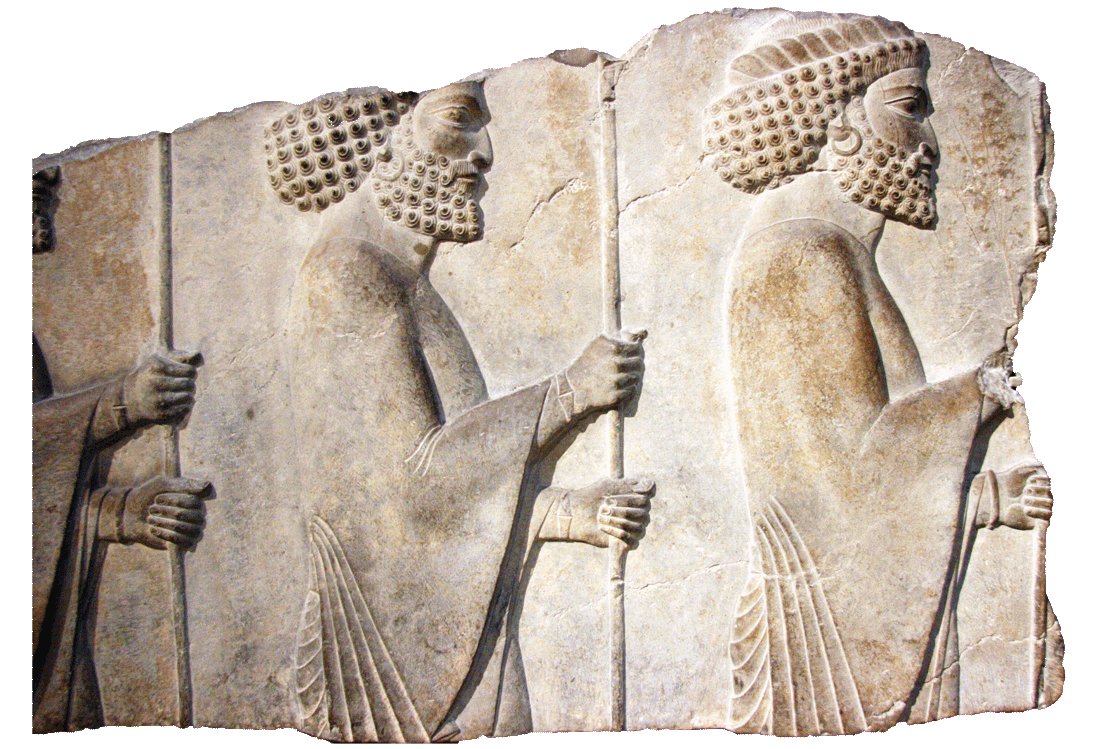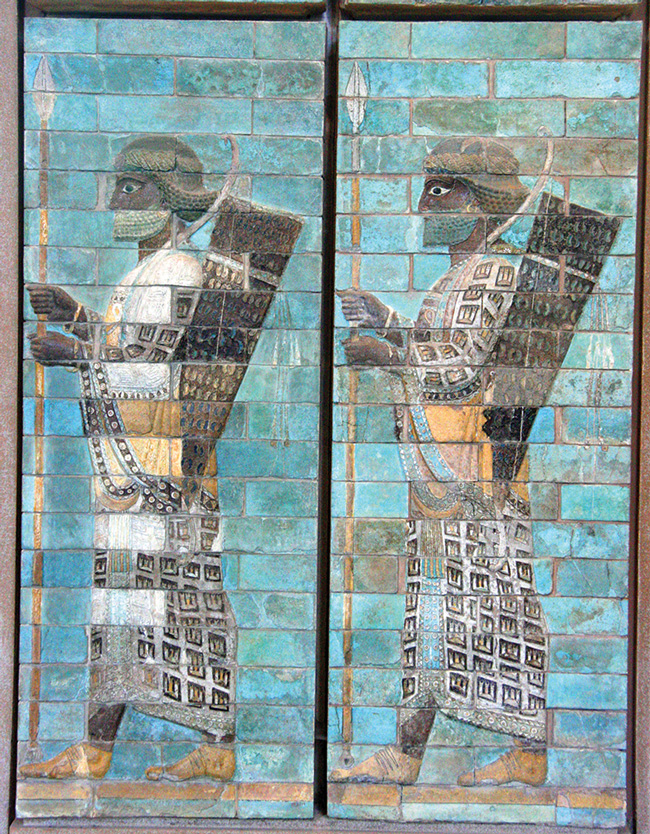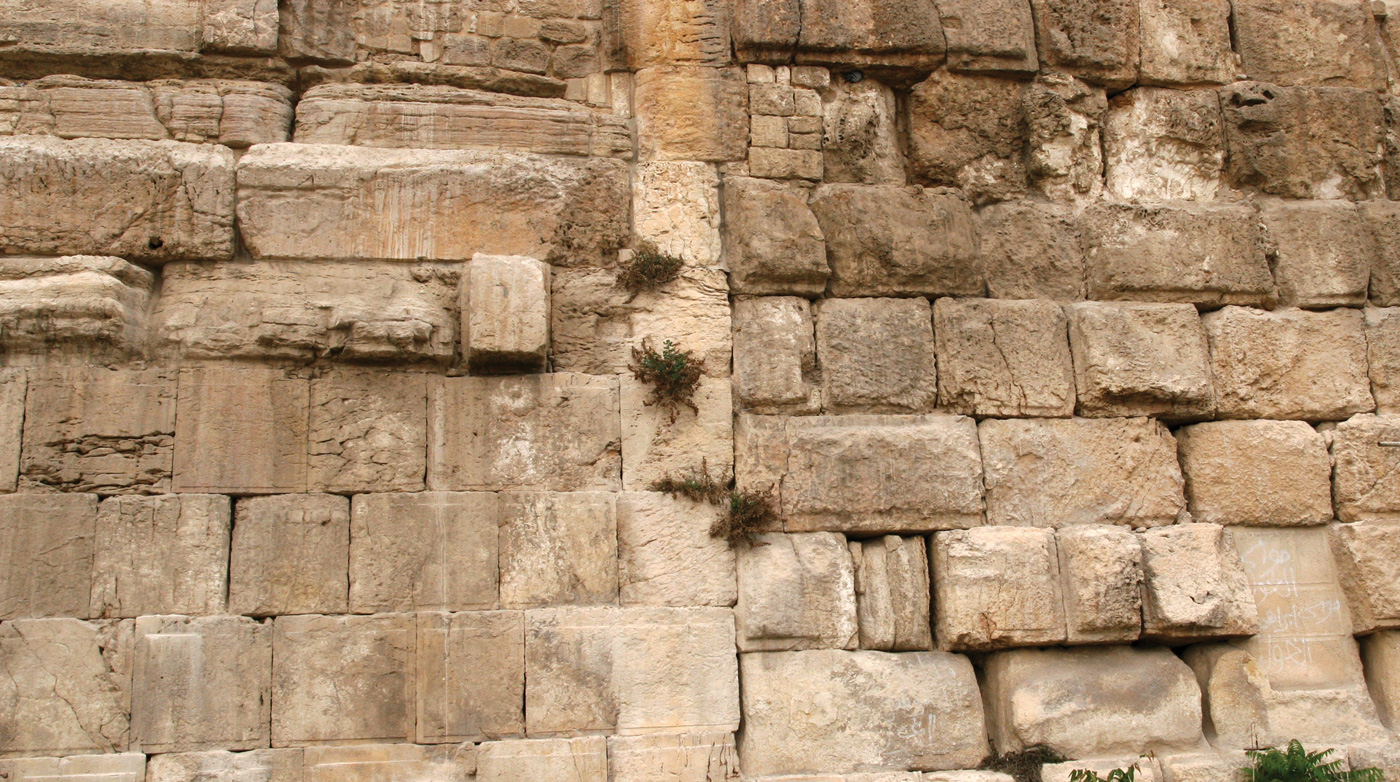Nehemiah
Rebuilding the Walls and the People of Jerusalem
Central Teaching
Led by the Lord, Nehemiah returns to Jerusalem from exile in Persia, quickly rebuilds the walls of the city, and then attempts to rebuild the nation around the faithful worship of God.
Memory Verse
Setting
In 586 BC the Babylonians capture Jerusalem and destroy it, rounding up most of the surviving inhabitants and forcing them into exile in Babylonia. In 539 BC the Persians, who now control the region, allow the shattered Hebrews to return home. The books of Ezra and Nehemiah tell the story of that return.
The Jews return to Judah in three waves. Zerubbabel leads the largest group back in 538 BC, followed by Ezra with a much smaller group in 458 BC. Nehemiah, appointed by the Persians to be governor over Judah, leads a third small group that returns in 445 BC with the primary goal of rebuilding the walls of Jerusalem.

Stone wall relief of Persian soldiers from the Persian palace at Susa
Message
The book of Nehemiah tells the miraculous story of how Jerusalem is reestablished in the postexilic period. In spite of serious opposition from several powerful neighboring enemies, Nehemiah, the new governor, quickly rebuilds the walls of Jerusalem, thus reestablishing the city as a viable and defensible entity. Rebuilding the people around the true worship of God is probably the ultimate goal of both Ezra and Nehemiah; the temple and the wall are simply means to help accomplish this. Thus the latter half of the book of Nehemiah focuses on Nehemiah’s efforts to address internal problems and get the Jews who are back in Judah to follow and obey God faithfully. In reality, rebuilding the nation is probably more difficult than rebuilding the wall. Nehemiah struggles with this endeavor, and as the book ends, it is uncertain whether or not the people are going to remain faithful to God without Nehemiah standing over them, watching.

Wall frieze of Persian soldiers from the Persian palace at Susa. Nehemiah was probably grateful to have a unit of Persian soldiers with him.
Outline
Interesting Features
- The race to rebuild the wall before Israel’s enemies can mobilize and attack is an exciting, suspenseful story.
- Nehemiah prays frequently throughout the story.
- Nehemiah’s external challenge (the wall) is easier to deal with than his internal challenge (the faithfulness/unfaithfulness of the people).
- The dedication of the rebuilt wall is celebrated by men and women with singing and great joy.

The walls of Jerusalem were built, torn down, and rebuilt several times throughout history. Shown here is a current view of the lower portion of the Eastern Wall. The stones to the right date to 164–37 BC, while the expansion to the left dates from 37 BC to AD 70.
Connections
Nehemiah seeks to follow God’s will faithfully, and he prays frequently throughout the book. Nonetheless, Nehemiah is confronted by numerous difficult obstacles, both external and internal. Even though he is doing God’s will, his task is never easy. This is a good lesson for us to learn. Just because God leads us to do a task does not mean that the task will be effortless or simple. Likewise, if a task we undertake for God becomes difficult, this does not necessarily imply that completing the task is not God’s will. Sometimes we tend to sit around waiting for God to show us “the open door,” assuming that if the door is not easily opened, then it must not be God’s will for us to open it. The story of Nehemiah suggests that if the door is closed, then perhaps God wants us to kick it in or find a window. God desires for us to trust in him for empowerment, but he also expects us to plan, lead well, work hard, and persevere in spite of opposition and “closed doors.”